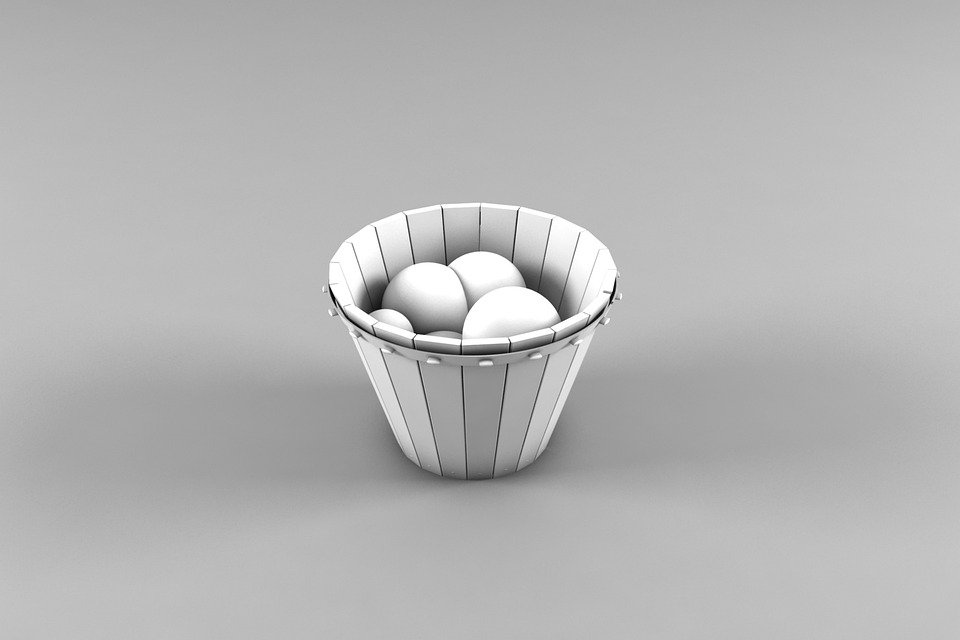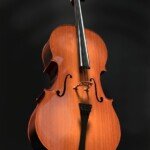Unlocking Innovation: M12 Oscillating Packot 3D Printing Files
Imagine replacing composites with a single elegantly designed component, multi-part components, for increased efficiency and reliability. That’s the hope behind the M12 Oscillation Packot – a specialized mechanical component that converts rotational motion into a critically important controlled oscillation in precision systems. Traditionally, manufacturing such intricate geometry involves expensive CNC machining, casting or investment casting, often with tool limits and material waste. But metal 3D printing has revolutionized the landscape, and access to professionally designed M12 oscillating Packot 3D printed files is a key first step to capitalizing on this potential. Let’s dig into why these documents are transformative and how they enhance engineers and manufacturers’ capabilities.
Beyond Traditional Manufacturing: Why 3D Print Packot?
M12 oscillating Packots usually have internal cavity, undercut, thin walls and complex curves required for their functions. These characteristics are nightmares of traditional subtraction processing. End Mills simply couldn’t get anywhere, requiring parts to be split into multiple bolts to be secured together. This can damage structural integrity, add weight, create joint failure points, and significantly increase assembly time and cost.
Metal 3D printing, especially techniques of selective laser melting (SLM) or direct metal laser sintering (DML), compromise these constraints. By building parts layer by layer directly from the digital model, it enables:
- True design freedom: Complex internal geometry, such as conformal cooling channels for thermal management or feasibility for lightweight organic lattice structures. The entire component can usually be printed as a monolithic component.
- Optimized weight and performance: Algorithm-driven topological optimization allows engineers to precisely minimize material usage where they are not needed, reducing mass and inertia without sacrificing important power. This will improve system responsiveness and energy efficiency.
- Enhanced features: Integrated features such as lubrication paths or mounting points can be designed directly into the part during printing, eliminating the need for other components or post-assembly modifications.
- Rapid prototype and iteration: Are there any design adjustments? Modifying CAD files and printing new prototypes is faster and cheaper than traditional methods to modify fixtures, speeding up the R&D cycle.
- Production agility: Ideal for low to medium production is that the cost of casting tools can be prohibitive.
The key role of high-quality 3D printing files
Accessing an M12 Oscillating Packot 3D Printed File (usually STEP, STL, or native CAD format specific to the printing software) is the starting point, but the magic is quality and Adaptability These files. Files designed for 3D printing are fundamentally different from CNC machining.
-
DFAM Mastery: Special designs for additive manufacturing are crucial. This includes:
- Optimization direction: Strategic positioning on the build board minimizes the need for support structures, reduces material waste, and ensures that critical surfaces have optimal surface surface and mechanical properties.
- Support structural policies: Smart placement support to ensure successful overhang without causing damage or requiring excessive post-processing efforts.
- Wall thickness and function verification: Make sure the design follows the minimum thickness requirements of the selected metal and printing process to prevent failure.
- Reduce stress concentration: Consider the printing process and the smooth transition and rounded corner design of the final load path.
- Material Compatibility Insights: Ideally, the printed files should be tailored to the expected metal. A packot designed specifically for aerospace grade titanium design (TI6AL4V) may require slightly different details tolerances or support strategies, while corrosion-resistant stainless steel (316L) or high-strength Maraging steel also requires slightly different strategies. This document must reflect the specific sintering/melting properties of the material.
Why pair your metal box with Greatlime?
Turning these high-precision M12 oscillating Packot print files into functional, reliable components require seamless bridging of digital design and advanced manufacturing expertise. Here, Greatlight fits your comprehensive metal 3D printing partner:
- Cutting-edge metal AM infrastructure: We operate the state-of-the-art SLM/DMLS platform for excellent accuracy and repeatability designs, and are able to handle complex designs with microscopic precision – exactly what complex Packots need.
- Materials Science Expertise: Not all metals are equal. We offer a wide range of certified materials portfolios (including ALSI10MG, titanium alloy, steel, Superalloys) and have a deep knowledge to guide you in choosing the best material for Packot’s performance requirements (strength, wear resistance, thermal properties, weight, weight).
- Master post-processing: Metal 3D printing parts make the printer unfinished. Provided by Greghime Integrated one-stop post-processing Tailored for the complexity of oscillating Packot:
- Support removal: Careful, precise technology to separate the support without damaging subtle functions.
- Pressure relief and heat treatment: Ensure dimensional stability, alleviate internal stresses caused by the printing process, and achieve the required material properties (hardness, tensile strength).
- Precise surface finishing: From rotation through a smooth passage or firing style through vibrating finishes to CNC machining required to use smooth oscillation, EDM or polishing techniques to achieve tight tolerances and mirror-like surfaces.
- Check and Verification: Advanced metrology (CMM, CT scan) is used to verify the dimensional accuracy and internal integrity of the original CAD model and printed files.
- Collaborative design support: Don’t have perfect files yet? Our engineering team is not only printing there; we can advise your Packot design on DFAM principles to optimize files for manufacturability, performance and cost.
- Speed and customization: Quick prototype turnaround? Urgent custom modification? Small batch production? We thrive on agility. Tell us your specifications, whether it’s tweaking existing files or creating new files from scratch and getting competitive prices without compromising quality.
Conclusion: Completely change mechanical solutions layer by layer
The M12 Oscillation Packot examples 3D printed files, coupled with advanced metal AM capabilities, unlocks design potential previously suppressed by traditional manufacturing restrictions. It represents a transition toward integrated functionality, weight savings, enhanced performance and accelerated development cycles. While having optimized 3D printed files is the foundation, realizing their full potential requires a partnership with experienced metal 3D printing experts who can browse the journey from digital blueprints to flawless end-use parts. Huge bridges, bridges, offer an unparalleled combination of cutting-edge technology, deep materials science understanding and meticulously precisely completed, which can transform your oscillating Packot concept into a powerful, high-performance reality. Don’t let go of outdated manufacturing constraints that limit your design. Embrace the future.
FAQ: M12 Oscillation Packot & Metal 3D Printing
-
Which file format do you want to accept to print M12 Oscillating Packot?
- Ideally, we prefer natural CAD formats (such as steps) for maximum flexibility. However, we can also use common 3D printing formats (such as STL or OBJ). Our engineering team reviews all documents to ensure manufacturability. If you have only one concept, we can assist in design and file generation.
-
Which materials are suitable for 3D-printed oscillating packaging?
- The best materials depend on your application:
- Stainless steel (e.g. 316L, 17-4 pH): Excellent strength, good corrosion resistance. Industrial equipment is common.
- Titanium (e.g. Ti6al4v, level 2): High strength to weight ratio, biocompatible, corrosion resistance. Ideal for aerospace, high-performance automotive or medical equipment.
- Aluminum alloy (e.g., Alsi10mg): Lightweight, good thermal conductivity and good strength. Ideal for critical weight applications.
- Mali Steel: Ultra-high strength and toughness after heat treatment. Ideal for demanding high-pressure environments. Discuss your specific needs (strength, weight, temperature, corrosion) for the best advice.
-
What is the sturdiness and durability of a 3D printed metal oscillating box compared to a machined box?
- Metal AM parts can achieve mechanical properties equivalent to or in some cases better than their casting or forging when correctly printed using optimized settings and appropriate post-treatment (especially heat treatment). Deeply dense parts (usually > 99.7%) are produced and the microstructure is controlled by heat treatment to meet the required strength, fatigue and wear resistance specifications. Verification testing is crucial.
-
What surface surfaces and tolerances can I achieve?
- The surface of the scale has a characteristic roughness. However, through our professional post-processing capabilities (CNC machining, EDM, electropolishing, manual polishing), we can achieve from a functionally machined surface (RA about 3μm average roughness) to a close-to-sistive finish (RA ~0.1-0.4μm). Achievable tolerances depend on part size, geometry, material and process chain. We usually target the standard of ±0.1 to ±0.2mm, but with dedicated machining steps, tolerances on key features may be higher.
- Can Greatlight help me optimize existing M12 oscillation Packot designs specifically for metal AM designs?
- Absolutely! Our strength lies in the design of additive manufacturing (DFAM) consulting. We analyze your existing design (whether from print files or concepts), recommend weight-reducing innovations (topology optimization), feature integration, improvements in features (such as internal channels), and tweak it to ensure reliable manufacturing, with minimal support and post-processing overhead. We work closely to provide optimized parts for performance and productivity.
Ready to use a precision 3D printed oscillation box to lift the mechanical system? Contact us today and let the Greglight team light up your next path to innovative solutions. Customize your precision parts now at the best prices!


















